Although its title sounds perfect for Halloween, this small book actually has little to do with actual ghosts.
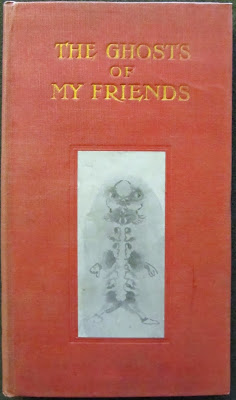 |
The Ghosts of My Friends turns out to be an unusual form of autograph book. As its instructions indicate, one is supposed to have one’s friends sign a page and then fold the page in half to create a unique ink blot that looked like a ghost, or skeleton. The ink blot on the book cover is supposedly formed from the signature of a famous general. There apparently was a London edition, but our copy was printed in New York by Fredrick A. Stokes Company.
We don’t know who owned our copy–it was inscribed to “a noble lady from a shadow”–but it was almost certainly a Rosenbach relative, since the book is full of Solis-Cohen, Binswanger, and Rosenbach signatures. Interestingly, the book is inscribed and the first autographs are dated June 16, 1910, a fittingly Rosenbach date.
Here is Philip Rosenbach’s signature.
This signature is Rebecca Rosenbach’s.
This is Miriam Rosenbach.
This is Dr. R’s signature–Abraham S. Wolf Rosenbach.
Finally, M. Rosenbach, possibly Moses Rosenbach.
A quick look around the internet turns up a number of other copies of this book, including one whose signatures include Winston Churchill, Dame Nellie Melba, and Paul Robeson, among other famous names.
Apparently the book did not invent the ghost autograph form; instead, there was was an early 20th-century fad for the signatures and the book was a response. Mark Twain wrote a 1905 note to his daughter Clara about “ghost autographs” which “generally [make] something resembling a skeleton.” (hat tip to Inherited Values) The Bancroft Library at U.C. Berkeley website has some additional examples of Twain’s blots–one supposed depicting him in his “Oxford gown” and the other “Shouting the battle cry of
freedom.” An early 20th-century write-up on ghost autographs posted online as part of a very informative article on the Inherited Values website shows George Bernard Shaw’s and President Taft’s ghosts and suggests that the novelty of the form was a good way to get genuine autographs from celebrities otherwise tired of requests.
The ghost-autograph also seems to be connected with a wider interest in ink blots. In the mid-19th-century the German poet Justin Kerner used inkblots made on folded papers as inspiration for a series of poems. In Potential Images, Dario Gamboni explains that Kerner “notes that his blots…liberate the imagination and tells us that they did not arise voluntarily or through his own talent, but of their own accord. He sees them as “images of hades” or “of hell” representing spirits that were condemned to remain in the darkness of his ink-well until they could use it as means to make themselves visible…” His Kleksographien images and poetry (from the German for blots) were published posthumously in 1890 and can be read online. If you’re intrigued, the the Tate blog also has an interesting post on the history of accidental forms (stains, inkblots, etc) as artistic inspiration.
Creating and interpreting inkblots became a popular parlor game. An 1896 American book called Gobolinks gave instructions and examples–each participant needed to create an inkblot and accompanying rhyme within a specified period of time and then they would be judged and prizes awarded. The book even suggests “For a specially invited Gobolink party the company may dress in any grotesque fashion,
remembering only that both sides of their costume shall be the same, this being a feature peculiar
to Gobolink attire.” And yes, pyschology texts note that Hermann Rorschach was nicknamed Klex (inkblot) in high school, which may suggest an interest in the European version of the game (another option is that the term, which can also mean “painter,” reflected a belief that he would follow his father into an artistic profession).
So, what do you see in these “ghosts”? It is a fascinating
concept and one that would be easy to replicate today–if you feel
inspired, please share your results!

Kathy Haas is the Associate Curator at the Rosenbach Museum & Library.


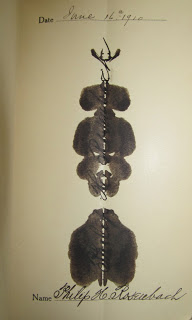
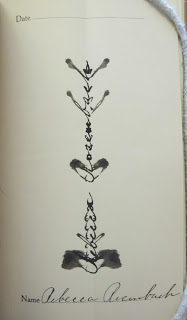
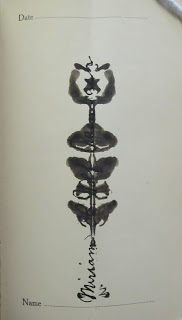
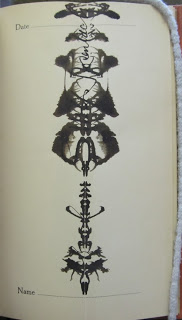
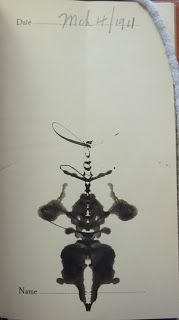
Thank you for this delightful article! I come to it having found one of these autograph ink blot books in the house I’ve been living in. Ours seems to perhaps been received as a Christmas gift, since the first several signatures were done on December 26, 1909. The next one is amusingly dated December 32, 1910. There are 17 more signatures until June 1910, then nothing until 1951, which is about the time the family I am connected to came into possession of the house I’m in. The 1951 signer didn’t seem to get the idea as she first signed the back side of the previous page. Also, it seems that maybe ink pens had changed significantly enough by this year that there was little running.